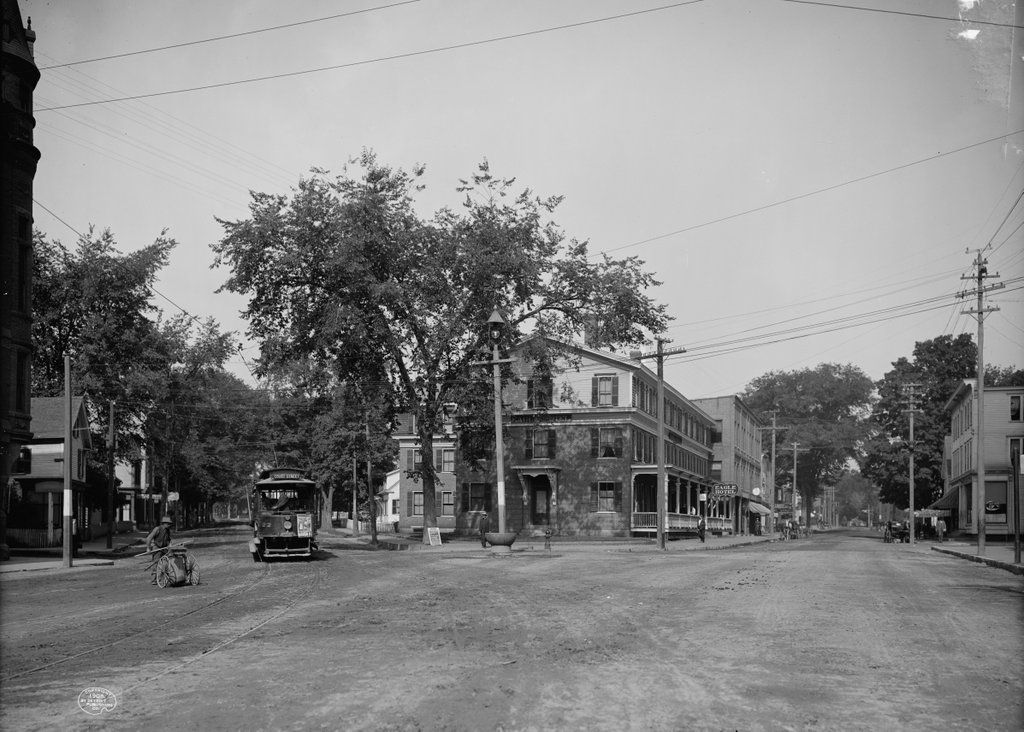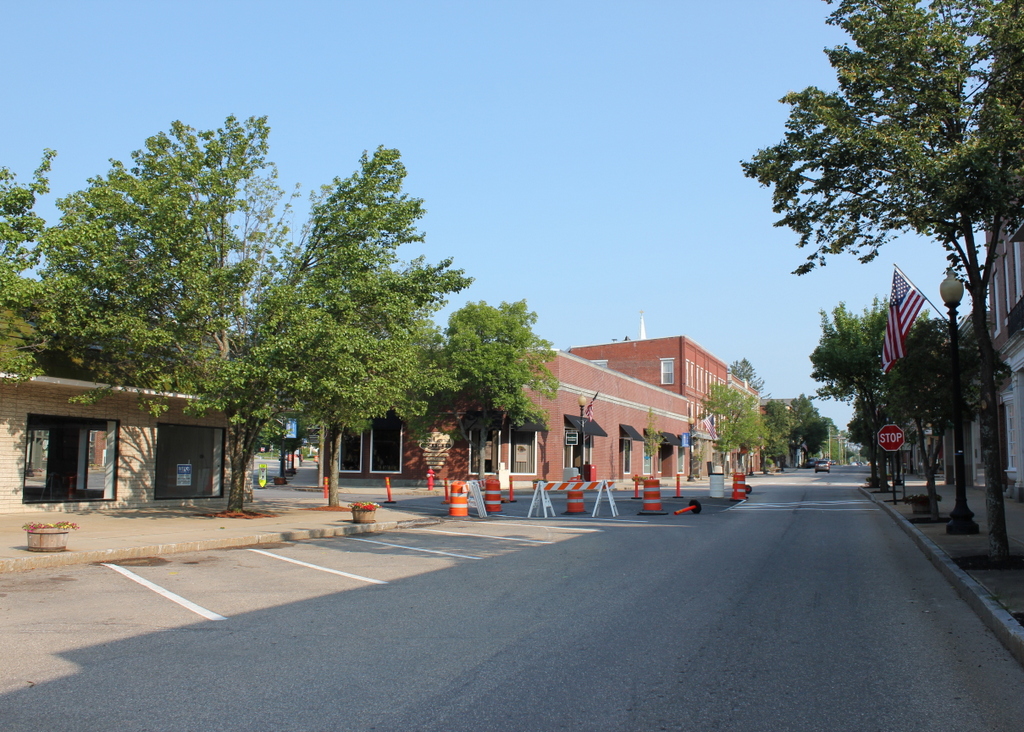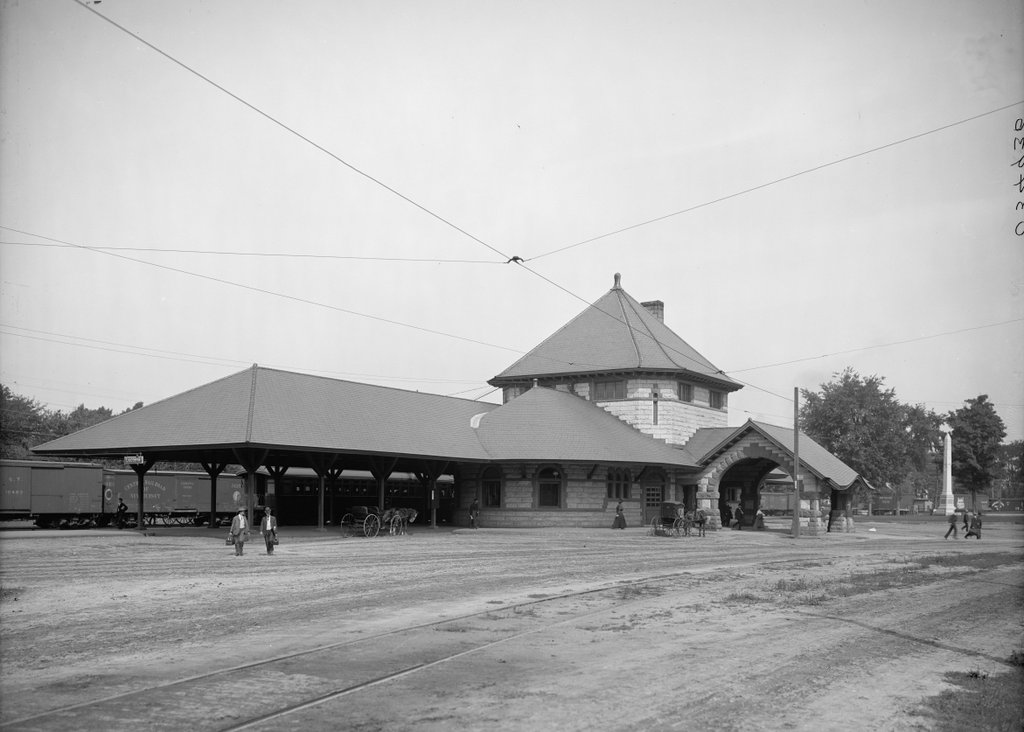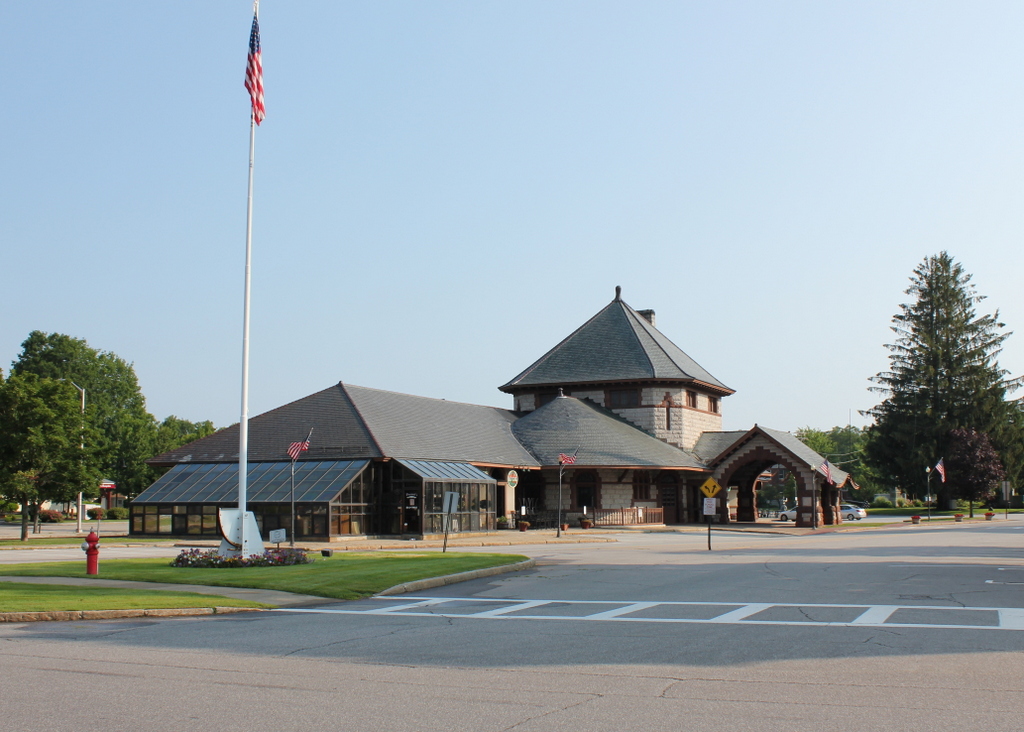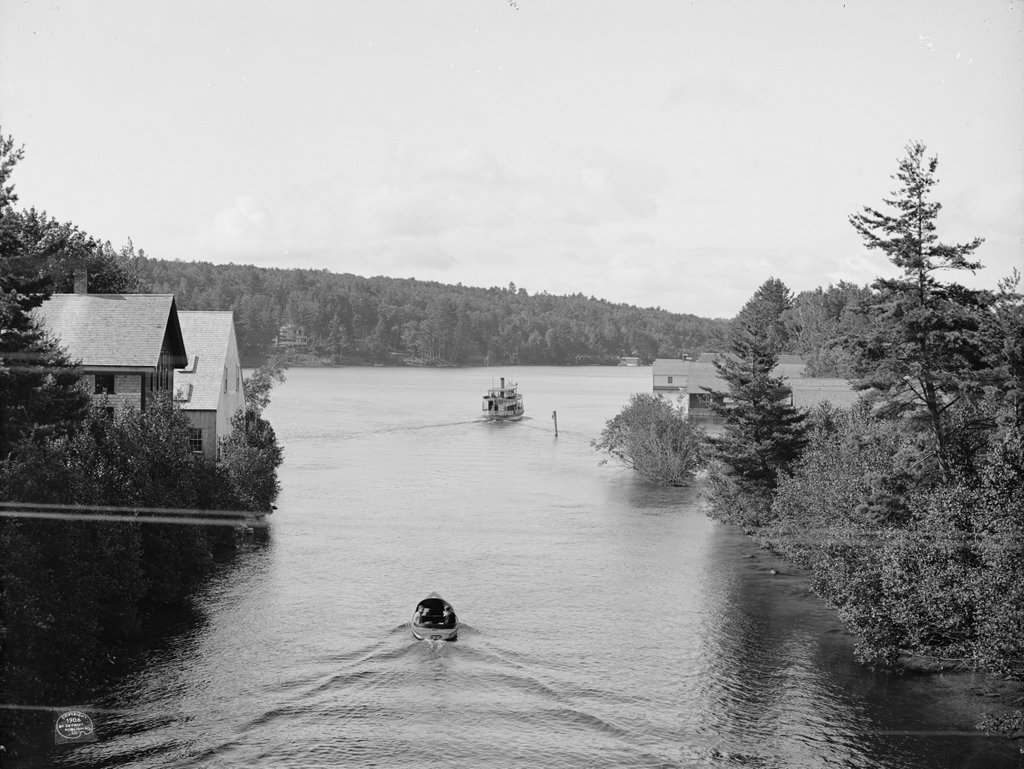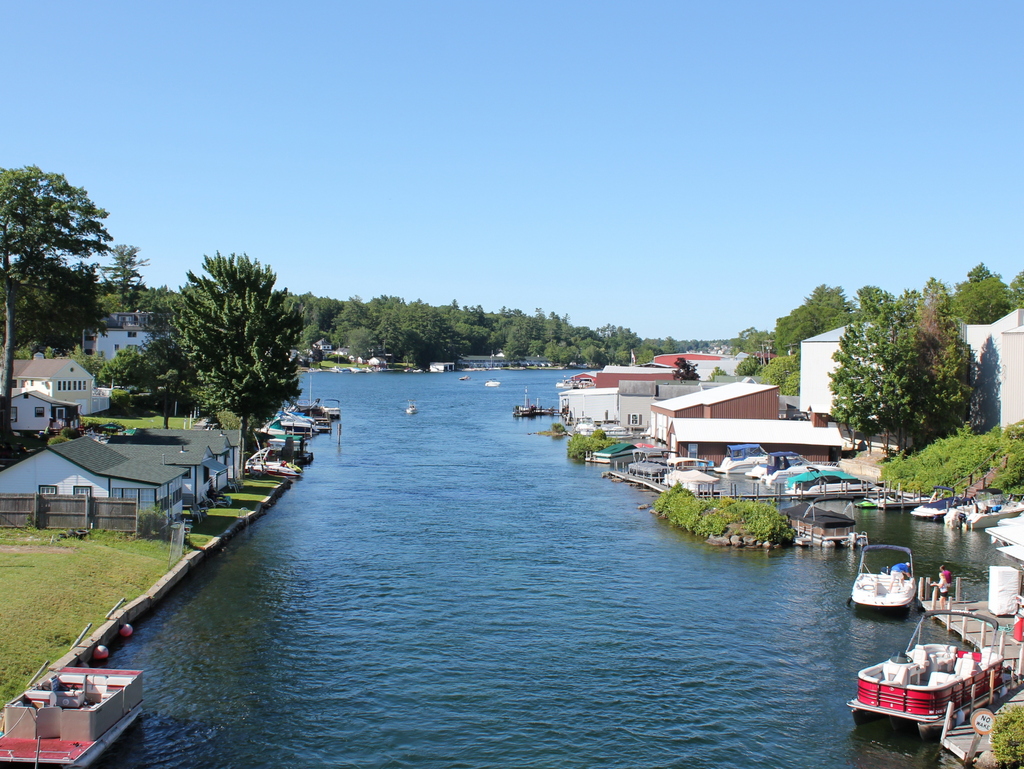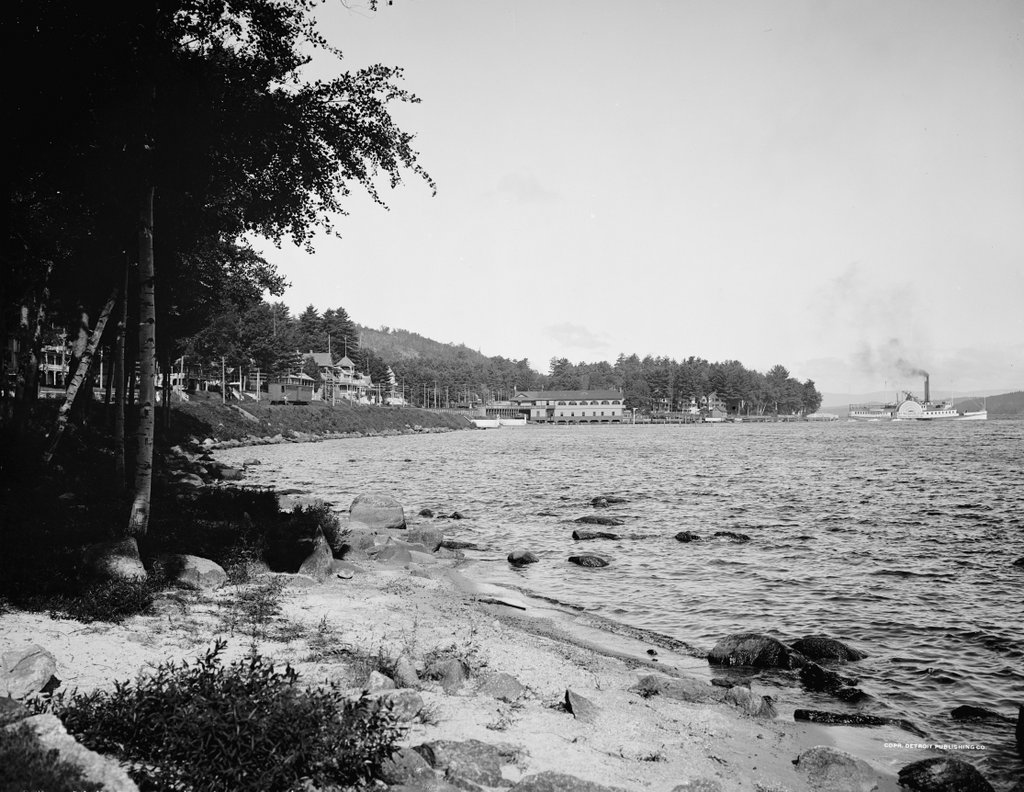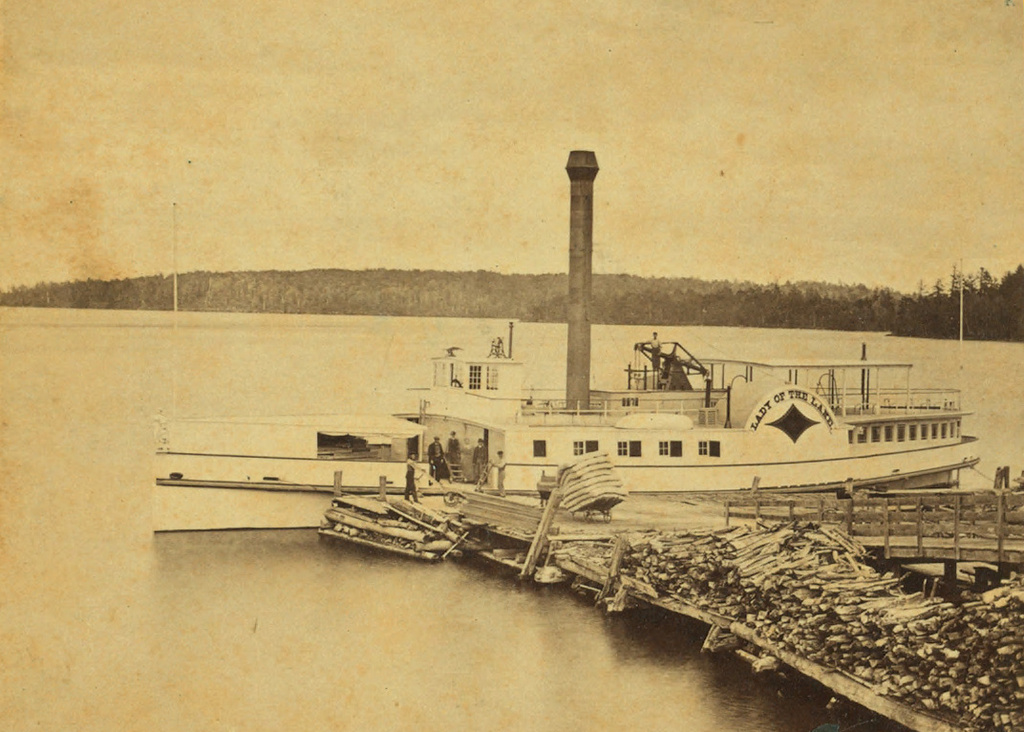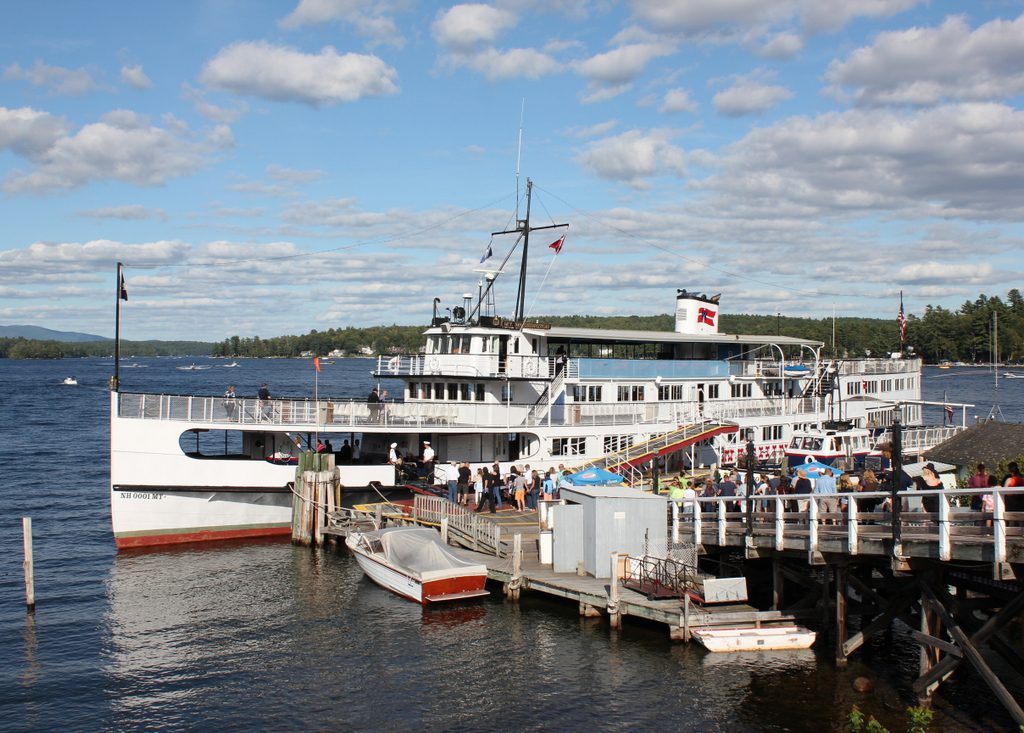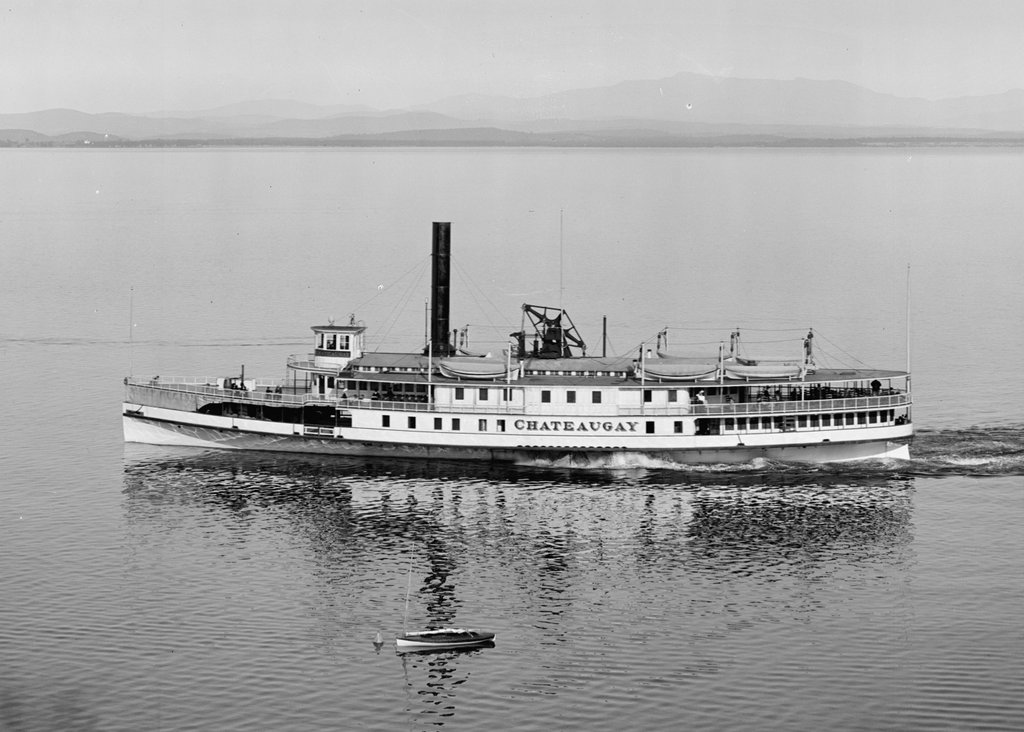Looking north on Main Street from the bridge across the Winnipesaukee River in Laconia, probably in 1907. Image courtesy of the Library of Congress, Detroit Publishing Company Collection.
Main Street in 2016:
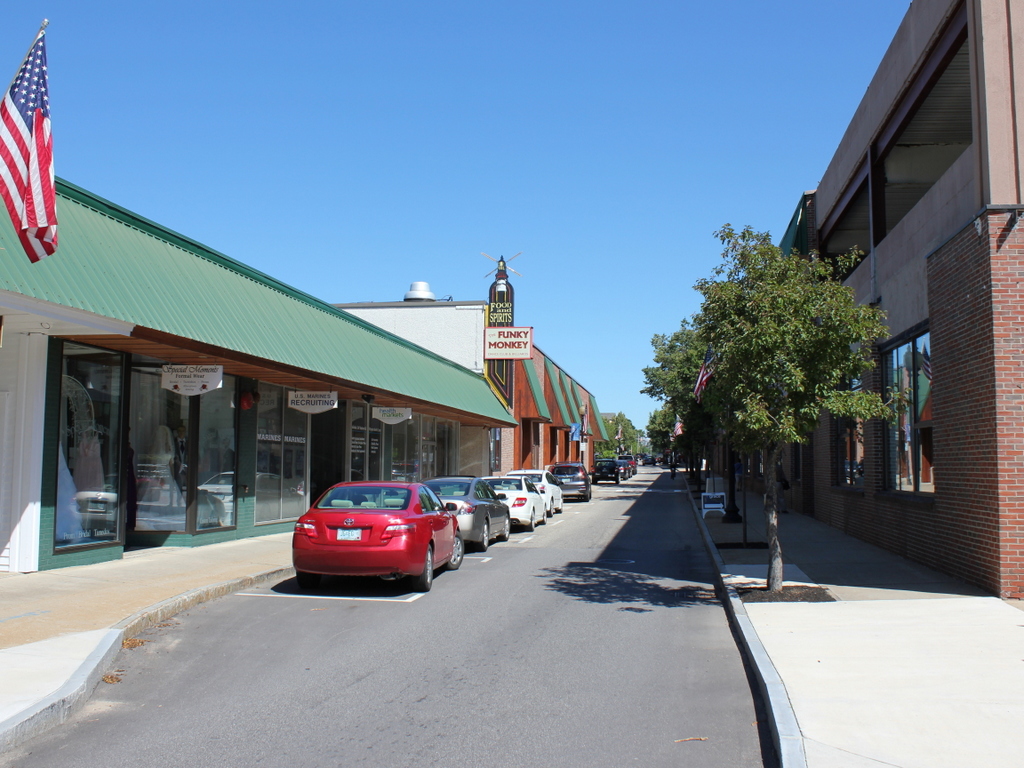
This scene is a perfect example of urban renewal gone horribly wrong. What had once been a vibrant downtown with a variety of 19th century architecture was completely leveled in the 1960s, and it was replaced with nondescript one-story commercial buildings to the left and a parking garage on the right. Even the streets themselves were dramatically changed, with bizarre traffic patterns and an extremely narrow, one-way street here that looks more like a back alley than a Main Street.
The first photo is far more interesting than the present-day scene, and it was probably taken around the same time as the one in this earlier post, which shows the same view from about 150 yards further up Main Street. Some of the downtown businesses in this view include several drugstores, hardware stores, tobacco shops, and confectioneries, along with a photographer, tailor, paint store, sporting goods store, baker, harness maker, and a horse shoer. There are several advertisements posted on the building on the left side of the photo. One of them is a poster for the Cole Bros. Circus on Tuesday, July 23, which helps to establish the 1907 date since that day was a Tuesday in 1907. Below it is a larger advertisement for Folsom Opera House, which reads: “A Genuine Treat. The most perfect Moving Pictures ever examined. All the latest and best films including the funny chase pictures and animated pantomimic dramas. Wonderful Realism.”
Most of the buildings from the first photo were still standing by the 1950s, as seen in a photo on this Weirs Beach website. However, nothing in the block between Beacon and Pleasant Streets is still standing today, and most of the buildings further in the distance are also gone, although some were demolished before the 1960s redevelopment. The Eagle Hotel at the corner of Main and Pleasant Streets was demolished in the 1930s, and the Unitarian Church across the street from it, whose steeple is visible near the center of the photo, was destroyed by a fire in 1938. At least one brick building, barely visible on the left side near the center of the photo, is still standing. Nearly 250 yards away from the camera, this is the only identifiable building left from the 1907 scene along this section of Main Street.


